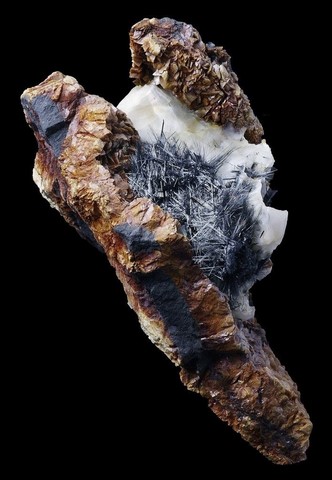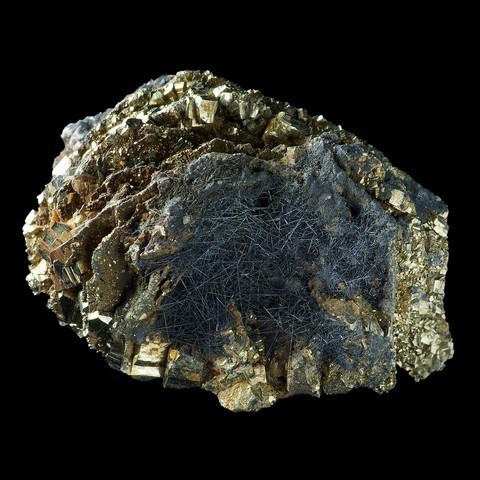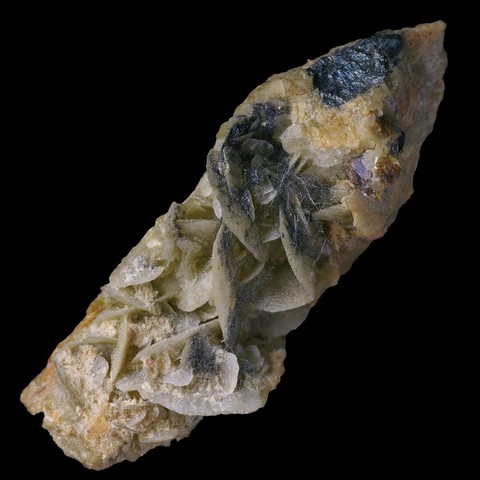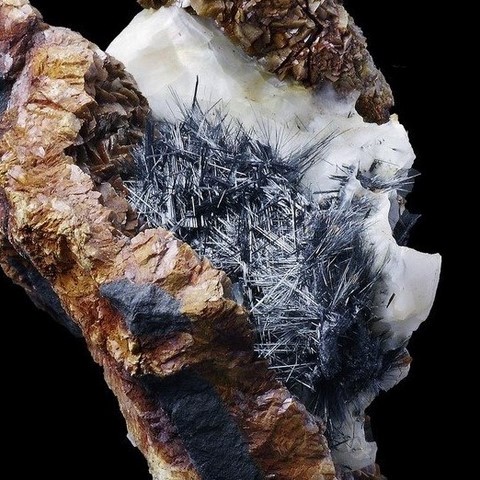BOULANGERITE
Class : Sulfides and sulfosalts
Subclass : Sulfosalts
Crystal system : Monoclinic
Chemistry : Pb5Sb4S11
Rarity : Quite common
Boulangerite is a common sulphosalt of medium-temperature lead and antimony hydrothermal veins. It is found, like jamesonite, semseyite, zinkenite or plagionite, in dominantly stibnite veins invaded by lead fluids or in galena and sphalerite veins infiltrated by antimony fluids. It owes its name to the French mining engineer Charles Louis Boulanger who makes the first description of this mineral. Well formed crystals are very rare ; they are then prismatic and deeply striated longitudinally according to [001], sometimes acicular. Boulangerite occurs almost always in capillary fibers or fibrous masses, frequentlyasbestiform (variety "plumosite"). It is easily altered in surface giving mixtures of antimonoxides and various oxides of lead. Its color is gray-black to bluish gray with a metallic luster. It is occasionally a lead ore. It is a mineral apreciated by mineral collectors but not easy to conserve due to its fragility
Boulangerite in the World
Boulangerite in France
In France, the most beautiful crystals come from the La Mure Mine in Isère with fibers of more than 5 cm as well as those of St-Pons which are taken in calcite and which after release with the acid can constitute spectacular samples. Boulangerite remains common in France, particularly in the auriferous veins of Labessette (Puy-de-Dôme) but also in the antimony mines of Haute-Loire (Ally Mine).
Twinning and special crystallizations
No twinning report for this mineral species.
Fakes and treatments
No fake inventories for this species.
Hardness : 2.5 to 3
Density : 6.2
Fracture : Undetermined
Trace : Gray
TP : Opaque
IR : -
Birefringence : -
Optical character : None
Pleochroism : None
Fluorescence : None
Solubility : Nitric and hydrochloric acid
Magnetism : None
Radioactivity : None





